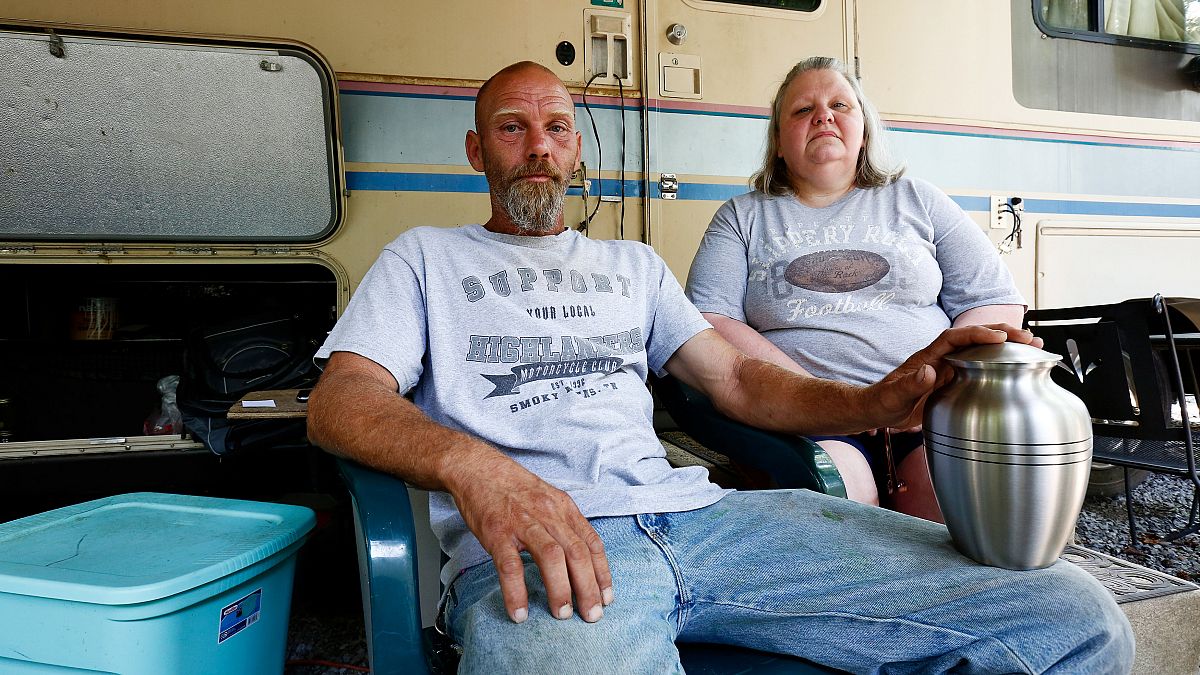The startling ease with which body parts are bought and sold in the US.
Cody Saunders was born with failing kidneys and a hole in his heart.
When he died on his 24th birthday, he had endured 66 surgeries and more than 1,700 rounds of dialysis, his parents said.
Too poor to bury or cremate him, they donated their son’s body to an organisation called Restore Life USA.
The facility sells donated bodies – in whole or by part – to researchers, universities, medical training facilities and others.
A month later Restore Life sold Cody’s cervical spine for $300 (254 euros) after a few e-mails to the buyer.
It’s unclear whether the organisation vetted the buyer, who was a journalist from Reuters news agency investigating how easy it was to buy human body parts and whether those parts would be useful for medical research.
In addition to the spine, the reporter later bought two human heads from Restore Life, each priced at $300 (254 euros).
The transactions demonstrate the startling ease with which human body parts may be bought and sold in the United States.
Neither the sales nor the shipments violated any laws, say lawyers, professors and government officials who follow the issue closely.
Although it’s illegal to sell organs used for transplants, it’s perfectly legal in most states to sell body parts that were donated for research or education.
Buying wine over the Internet is arguably more tightly controlled, generally requiring at minimum proof of age.
To comply with legal, ethical and safety considerations before the purchases, Reuters consulted with Angela McArthur, who directs the body donation program at the University of Minnesota Medical School. She took immediate custody of the spine and heads for Reuters, inspecting and storing them at the medical school.
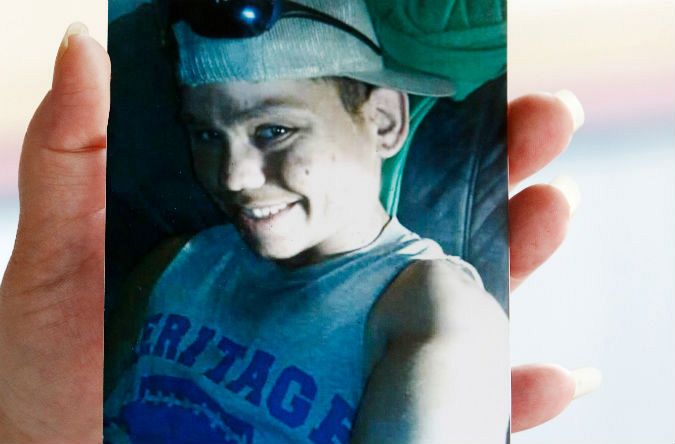
Cody Saunders
McArthur said she was troubled by how easily the body parts were acquired and by the failure of Restore Life to perform proper due diligence.
“It’s like the Wild West,” McArthur said. “Anybody could have ordered these specimens and had them delivered to their home for whatever purpose they want.”
McArthur examined the remains and the documentation included with them to determine how useful the parts would be for medical research. Her review was based on national safety and ethics standards she helped draft for the American Association of Tissue Banks, the American Association of Clinical Anatomists and the University of Minnesota.
She concluded that the medical history Restore Life provided was insufficient, and that the accompanying paperwork was sloppy and inadequate. For those reasons, the specimens did not meet standards for use at her university, she said.
“I haven’t seen anything this egregious before,” McArthur said. “I worry about the future of body donation and public trust in body donation when we have situations like this.”
The broker
Contacted several months after the sales, Restore Life President James Byrd briefly explained his approach to business.
“Organisations like ours are what I consider accountable because, especially us, we have direct contact with the donor family,” he said. “And there’s a certain level of respect and dignity that is involved there because we have that personal relationship with them.”
Byrd subsequently declined to be interviewed or answer written questions. But he emailed a statement in which he criticised Reuters for making the purchases.
“It’s obvious your team at Thomson Reuters has no concern for those that seek help from our organisation,” he wrote. “You only wish to hurt those that need help the most.”
Byrd added that Restore Life does good work by supplying body parts to researchers working to cure cancer, dementia and other diseases.
“We help countless people through a wide range of research working with world-renowned researchers,” he wrote.
In 2011, Byrd spoke publicly about Restore Life in a presentation to the commissioners in Sullivan County. Officials there had grown frustrated by the increasing cost to taxpayers of cremating the indigent. According to a recording of that meeting, Byrd explained that he could help the county. He also noted that many families who donated to Restore Life did so for financial reasons: All expenses were covered, including cremation.
“We have become more a service for those indigent and pauper cases that can’t afford a funeral,” Byrd told the commissioners. “It’s a perfect fit for situations where families don’t have the funding or sometimes where it’s left to the county for funding.”
Whatever good Restore Life hoped to achieve by supplying these body parts, McArthur said, its poor handling of the remains “miserably failed” to serve researchers and the three donors: Cody Saunders and the unidentified man and woman whose heads Byrd sold to Reuters.
McArthur said the relatives of donors, whose intentions are noble during a difficult time, deserve better from the industry.
“People think they are doing the right thing, and they want to fulfill their loved ones’ wishes,” said McArthur, who formerly chaired Minnesota’s body donation commission and serves on the leadership council of the American Association of Clinical Anatomists. “I know they would feel exploited to know that something like this happened.”
Thomas Champney, an anatomy professor at the University of Miami Miller School of Medicine, also expressed alarm at the ease of the sales.
“Human body parts should not be bought and sold in the same manner as used refrigerators,” he said.
The donor
Angie Saunders recalls that during her pregnancy, there were no signs of trouble in her prenatal check-ups or ultrasound tests. But when Cody was born on August 2, 1992, he arrived in grave distress.
He was moved from the county hospital to the University of Tennessee Medical Center in Knoxville, where he stayed three months. He was diagnosed with VATER Syndrome, a condition involving multiple birth defects.
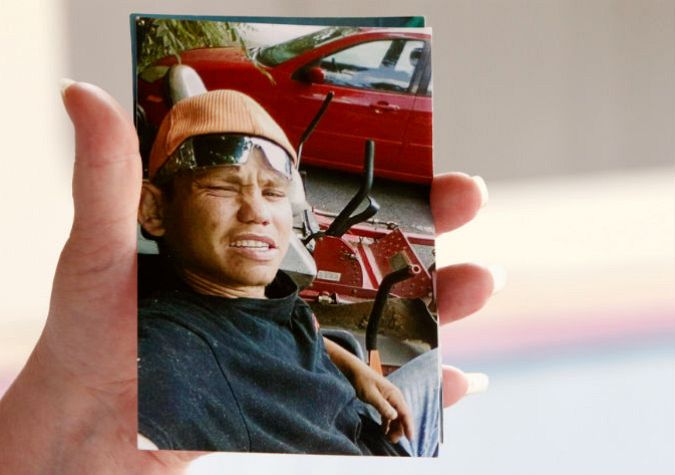
Cody Saunders
Besides the hole in his heart and failing kidneys, Cody was born without a rectum. For the first two years of his life, Cody’s parents said, they fed him through a gastrostomy tube.
Cody had so many dietary restrictions – no milk, no chocolate, no tomatoes, no salt – that he settled on dry Fruit Loops as his go-to meal. For dessert, he took a couple of bites from a stick of butter.
Cody needed dialysis three times a week, four hours per session. Given her son’s needs, his mother couldn’t work much. His father told every employer upfront that his child came first.
“Half of his life, if it wasn’t the hospital, it was dialysis,” Richard said. “I went through a lot of jobs.”
When Cody was about nine years old, his parents said, he received a kidney transplant that transformed him. It freed him from constant dialysis. He learned to swim and had more time for school.
“I wouldn’t say he was normal,” Richard said, “but at least we wasn’t having to be tied down as much.”
The new kidney lasted a little more than five years, and when it failed, Cody was rushed by helicopter to the hospital for a month-long stay, his parents said. Dialysis began anew.
In his final years, Cody grew sad and lonely. His parents noticed, and so did his friends on Facebook. He was weary of the pills, the dialysis, the hospitals and the constant reminders of what he could and could not do, his parents said.
“I think not just his body was tired, but his whole mind was done,” his father said.
“He wasn’t scared,” his mother said. “He was ready.”
Cody’s heart stopped on his birthday, August 2, 2016. Not long afterward, Restore Life collected his body.
Ordering a spine
On August 29, 2016, Reuters reporter Brian Grow sent an inquiry via email to Restore Life’s Byrd. At the time, the news agency knew nothing about Cody Saunders.
To contact Byrd, the reporter used his real name and his Thomson Reuters email account.
Nearly a month later a FedEx driver delivered a brown cardboard box to the Minneapolis location where Reuters had leased a mailing address. There, Grow received the package and gave it to a courier who specialises in transporting human remains. The courier drove it directly to McArthur at the medical school.
McArthur immediately noticed problems. She said she found it odd that the outside of the box was not labeled with a customary warning that human remains were inside. McArthur found a pair of one-page documents in the box. One contained the results of a serology test by a reputable company, certifying that the donor was free of infectious disease.
The other page offered a handwritten summary, in layman’s terms, of the donor’s medical history.
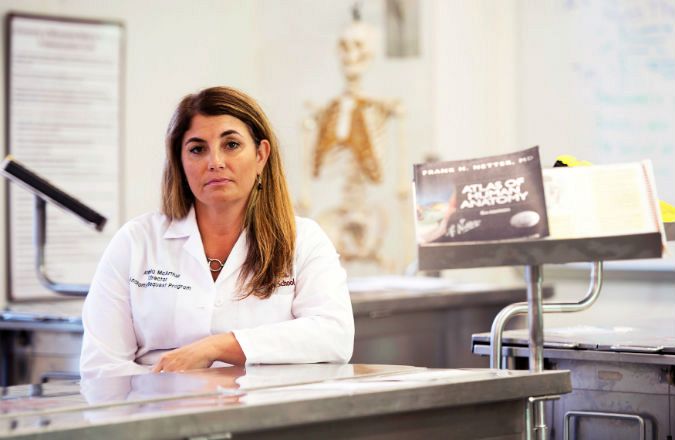
Angela McArthur
“In my experience, I would have expected to see a more robust form,” McArthur said, explaining that most brokers provide precise and detailed medical histories. “It’s very superficial.”
The medical summary contained neither letterhead nor contact phone number, she noted. McArthur also cited inconsistencies in the specimen identification numbers listed at the top and bottom of one of the pages. And she noticed a small discrepancy between the identification numbers listed on the paperwork and a tag attached to a plastic bag covering the spine.
Precise, legible medical history and consistent donor identification systems are critical information for proper medical research, said University of California anatomical services director Brandi Schmitt. The medical history helps the researcher account for variables such as disease or trauma. Clear paperwork and accurate tagging, she said, allow researchers to track specimens in a scientific manner.
To prevent mishaps that could lead to lost or misidentified body parts, Schmitt said, most hospitals and medical schools use modern tracking techniques, including computer-generated metal discs or barcode tags. A label of some sort should have been directly attached to the spine itself, she said, not merely to the packaging.
“Misidentification is a real problem, for sure,” said Schmitt, who coordinates body donation for the University of California’s medical schools statewide. “I don’t think that a handwritten document is your most professional approach. It can lead to human error.”
A week after the spine arrived, Byrd responded to a follow-up email from Grow. Byrd said human heads were available for $300 each. He also offered discounts on knee and foot specimens to free up “some freezer space”. He wrote that his low prices for body parts reflect the company’s “nonprofit public charity” status, adding: “We are looking to just cover our overhead.”
Grief and ashes
Richard and Angie Saunders said they wanted to bury Cody beside relatives in a nearby cemetery. But Richard, who struggles to read, earns only about $900 a month. Angie, who has long suffered from debilitating anxiety, cannot work or drive. A burial was simply too expensive.
Friends offered to pay for cremation, which typically costs at least $695 in the region. But the Saunders said they felt uneasy about accepting charity from folks they know. So they donated Cody’s body to Restore Life. At the time, Richard said he was grateful for the free cremation the firm promised.
The hardship the family faced is not uncommon among donors, said Martha Thayer, chair of the mortuary science program at Arapahoe Community College in Colorado.
Bereaved families are “vulnerable and are being put in the position of choosing this as an option when they don’t have money,” Thayer said. “The only thing that’s more sad than a person who can’t afford to live is a person who can’t afford to die.”
The Saunders said they believed this meant that Restore Life would merely remove small skin samples from Cody for medical research, cremate him and then return his ashes. The Restore Life consent form for Cody didn’t disclose that a donated body may be dismembered, as consent forms of most other brokers do.
A few weeks after the donation, a man from Restore Life delivered an urn with Cody’s ashes. Angie can’t recall the man’s name but said he was kind.
“Really nice and understanding,” she said.
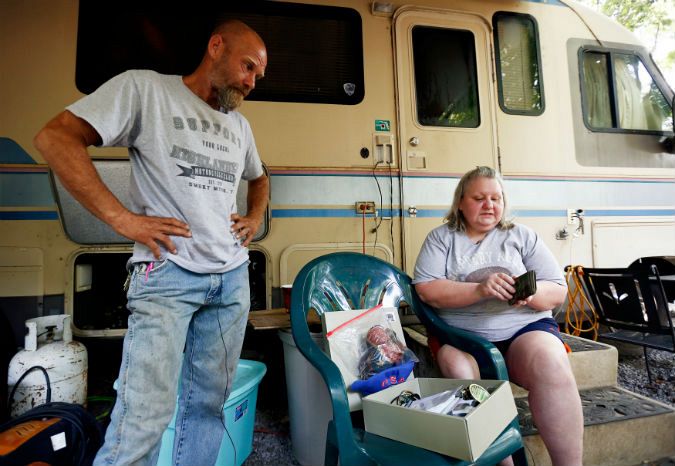
Richard and Angie Saunders
As is customary in the body broker industry, Restore Life did not include the names of the people who donated the body parts it sold to reporter Grow – just each person’s age and date of death.
Reuters could not identify the individuals whose heads were shipped. But at just 24, Cody Saunders died so young that the news agency was able to identify him after searching through obituaries in southern states.
With his parents’ permission and participation, Reuters hired a forensic lab to perform a DNA test. It confirmed that the cervical spine came from Cody.
In late August, Grow returned to visit Richard and Angie Saunders to tell them what Reuters had learned: Restore Life had dissected their son’s body and sold part of his spine.
For a few moments, Cody’s parents sat silently.
Angie stared into the distance. Richard looked at the ground.
Then Angie spoke. “I thought they was just taking skin samples,” she said and began to cry.
Richard tried to comfort her. “It’s over with, honey.”
“I didn’t want no more surgeries,” she said.
“At that time, we did not have no choice,” Richard reminded her. “But you have to look at it this way: Like you kept saying, if it’s going to help somebody else…”
“I know, I know.”
The couple said nothing more for nearly half a minute. Finally, Richard turned to Angie. This part of their lives was “done and over,” he told her.
Had they known Cody would be dissected, his parents said, they would not have donated his body. Cody, they felt, already had endured too many surgeries during his short life. They didn’t want, or expect, anyone to “cut on him” in death, Richard said.
And yet, he added, “I couldn’t afford to do nothing else, so I felt like that was the best option we had.”
Richard asked whether Restore Life used any other parts of Cody’s body. The reporter said he didn’t know. Brokers typically don’t disclose that information. Richard said he doubted he would seek answers from Restore Life. “I don’t blame them,” he said. But he appreciated learning what happened to Cody’s remains.
“Because we would have never known,” he said.
Angie agreed. “We wouldn’t have had a clue.”
Early this month, in keeping with the family’s wishes and at Reuters’ expense, Cody’s spine was cremated in Minnesota. Grow delivered the ashes to the Saunders family at their home in Tennessee.
